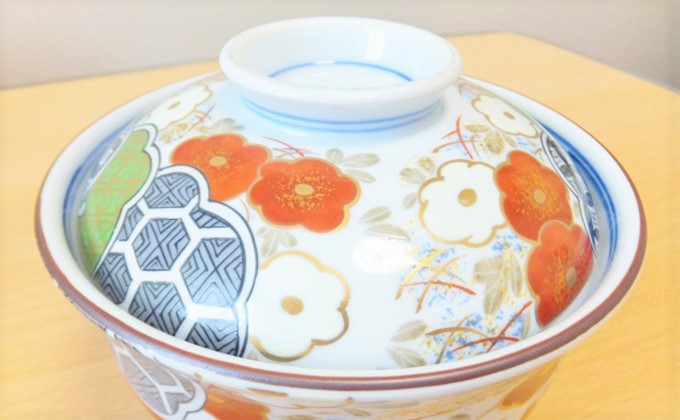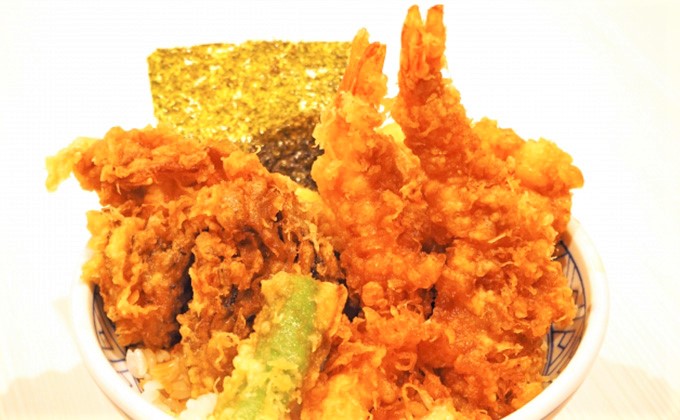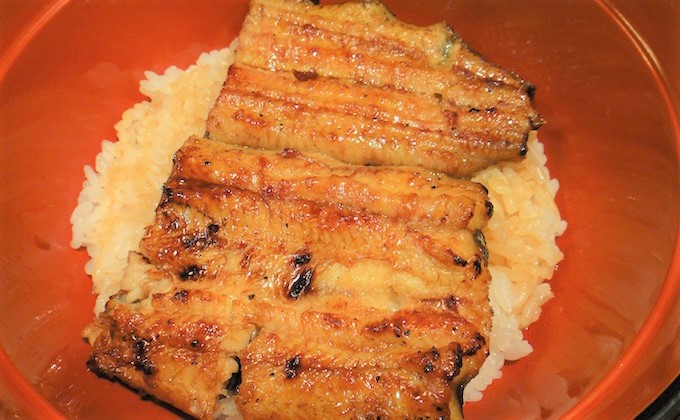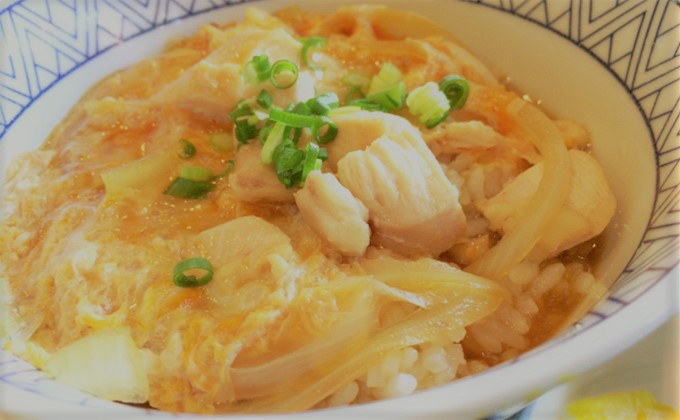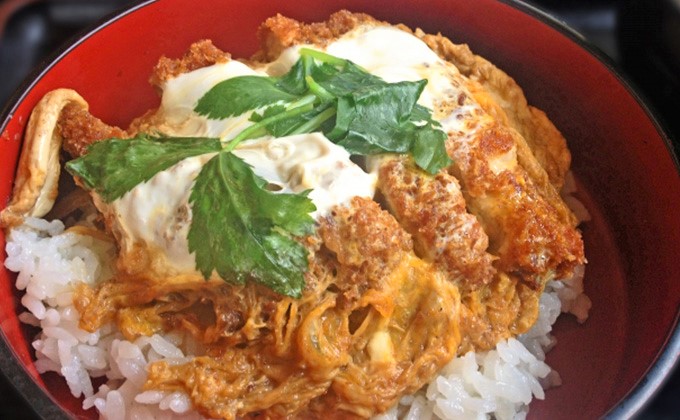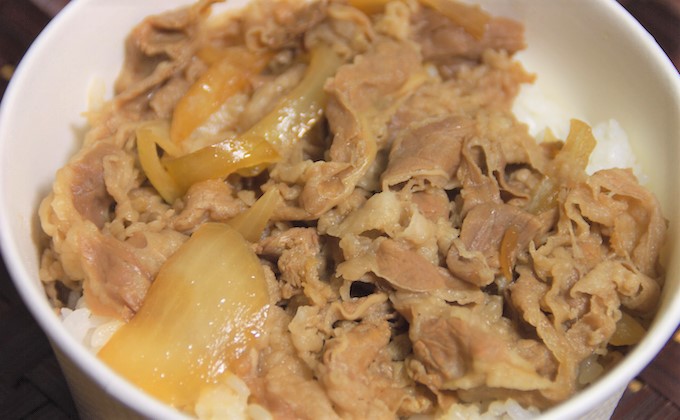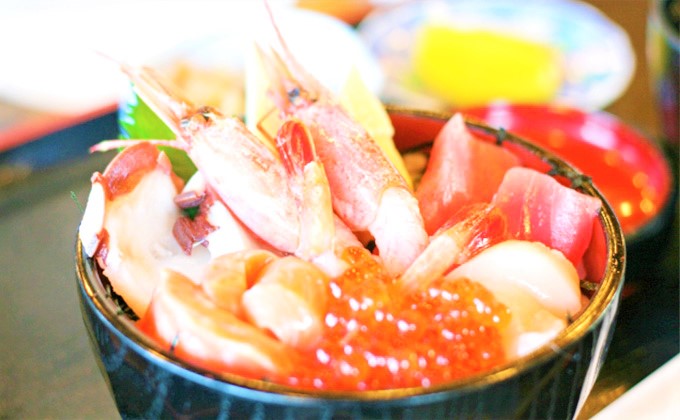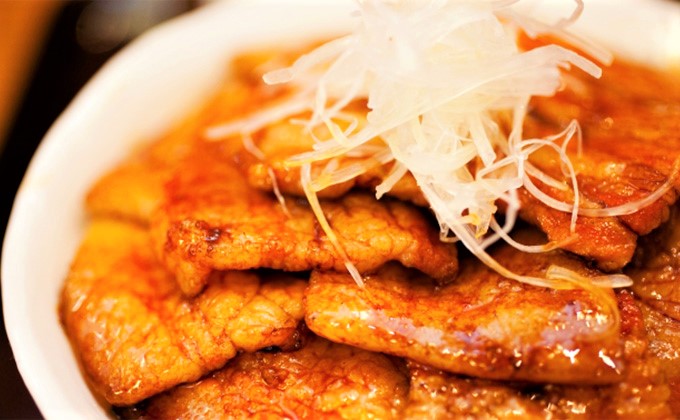TRG Info and Advice
Donburi-mono (a bowl of rice with toppings)
What is donburi-mono?
Donburi-mono is a Japanese dish of rice in a bowl topped with meat, vegetables and other ingredients, making it a complete meal.
Usually, in Japanese cuisine, rice is served in a small bowl, with main and side dishes served separately on small plates or in other bowls. For donburi, however, rice is served in a deep bowl, with a thick and heavy body, then topped with various items. Donburi-mono, with rice and main, or side, dishes in one bowl, is very popular in home kitchens and restaurants, as it requires just one bowl, and is convenient and delicious.
There are many variations of donburi, including typical donburi such as ten-don (tempura over rice), gyu-don (simmered beef over rice), and katsu-don (breaded pork cutlet over rice), as well as countless other combinations of rice and toppings. Donburi can be made easily, by adding whatever you like as a topping over a bowl of rice.
Donburi-mono is usually served in a bowl with a lid, and there are some reasons for this. One is because, covering the bowl with a lid helps keep the heat and steam from the food in the bowl, maintaining the perfect temperature. Covering the bowl also allows the aroma of the toppings to permeate the rice, increasing the donburi’s level of deliciousness. The flavor of the sauce, also, blends well with the toppings and the rice soaks up some of the sauce. Another reason donburi is served in a covered bowl is that if rice is covered with toppings and sauce is just poured over it, the sauce gathers at the bottom of the bowl. If rice is steamed in a bowl covered with a lid, however, the starch of the rice soaks up the sauce, and the flavor rises to the top.
The origin of the word “donburi” can be traced to a name for a bowl. In the beginning of the Edo Period (c. 1661-1672), one-bowl-meal restaurants were called “kendon-ya”, and the bowls used there were called “kendonburi-bachi”. One theory claims that kendonburi-bachi was then abbreviated to donburi-bachi, and eventually shortened to just “donburi.” In Japanese, kendon means miserly and greedy, and the dish served at a kendon-ya was called kendon-meshi (a miserly and greedy meal).
The History of Donburi-mono
The history of donburi-mono dates back to the Muromachi Period (1330-1570). At that time, there was a dish called houhan, which was a bowl of rice topped with stewed vegetables, with dashi soup poured on top. Houhan was a dish originally prepared at temples. Vegetables and dried food were shredded and seasoned, then arranged beautifully on top of a bowl of white rice. The toppings were chosen in five colors: white, yellow, red, green and black, to represent the Chinese theory of Yin-and-Yang and the Five Elements. The dish was then covered with a clear soup and eaten.
It was not until urban economy was developed in the Edo Period (1603-1867) that the donburi dishes we know today emerged. A donburi dish is an ensemble of multiple culinary arts, and has rules for its assembly, just as numerous parts and technologies are required to build a car. For example, ten-don (tempura donburi) would never be served without tempura.
The present form of donburi is considered to have originated from una-don, invented in the Bunka Bunsei Era (1804-1829) of the Edo Period. It was a dish of rice stuffed with grilled eel, so that people could eat easily at theatres. Before very long, cheap restaurants and those specializing in donburi, began to thrive. There were other types of restaurants, too, including chameshi-ya (restaurants specializing in rice cooked with tea), rice ball restaurants, and others. The food service industry flourished because the population of Edo was over 1 million people, there were 1.5 times more men than women, and many males were migrating to Edo unmarried, without their families. At first, a single helping of rice served in a donburi bowl was unpopular, because it was associated with the large bowl of rice offered at the bedside of the deceased. Over time, however, it spread widely among common people and gained popularity as a quick and convenient food, because it tasted delicious and people found it easy to eat rice and sides-dishes all at once.
The donburi-mono dishes familiar to us today appeared during and after the Meiji Period (1868-1912). Oyako-don and gyu-don emerged in the Meiji Period, tekka-don at the beginning of the Taisho Period (1912-1926), and katsu-don, which was, reputedly, first served at the end of the Taisho Period. Donburi-mono variations have been expanding with numerous toppings, and local specialty versions of donburi have also developed.
Donburi-mono Dishes
Ten-don (tempura, deep-fried seafood and vegetables, over rice)
Ten-don is crisply battered and fried shrimp and vegetables, or kakiage tempura with shredded kobashira (surf clam) and shiba shrimp, covered in a soy-based sauce. There is also ten-toji don, which is tempura simmered and wrapped in a blanket of eggs. Tempura, a recipe developed from a Portuguese dish, became common in the first half of the Edo Period. It is said that tempura was first served as ten-don in 1837, during the Edo Period (another theory claims it was 1831).
Una-don (grilled eel over rice)
Unadon is a bowl of rice sprinkled with a sweet, soy-based sauce, then topped with glaze-grilled eel and covered again with the same sauce. The savory aroma and rich flavor stimulate the appetite, so it is often used as a stamina-enhancing dish for the sweltering days of summer. Una-don served in a square, lacquer box is called unaju.
Oyako-don (literally: parent and child)
Oyako-don is chicken simmered with eggs in warishita (broth) over rice. The name oyako is a reflection of the fact that chicken (oya meaning “parent” in Japanese) and eggs (ko meaning “child” in Japanese) are used in this dish. It was, reputedly, first served at a restaurant specializing in Shamo chicken dishes in Nihonbashi, Tokyo, in the Meiji Period (1868-1912). The day’s leftovers were simmered with eggs and put on top of rice, then delivered to the fish markets. The dish gained popularity and eventually developed into the current form of oyako-don. Salmon sashimi with ikura (salmon roe) over rice is also called oyako-don.
Katsu-don (fried cutlet over rice)
The most common katsu-don is a bowl of rice topped with a deep-fried breaded pork cutlet simmered with eggs. There are some variations, including katsu-don with breaded pork soaked in sweet-and-salty soy-based sauce with the sauce poured over it, and sosu-katsudon with a Worcester sauce-glazed pork cutlet on top of shredded cabbage. In some areas these variations of katsu-don are simply called katsu-don. The word katsu means “to win” in Japanese, so katsu-don is in high demand for times when good luck is needed; for example, before exams.
Gyu-don (beef over rice)
Gyu-don is slices of beef and onion, simmered in a sweet-and-salty soy-based sauce, over rice. Gyu-nabe, a Japanese style beef hot pot, was all the rage at the beginning of the Meiji Period, and gyu-meshi, where rice was topped with beef and other ingredients cooked in the hot pot, was created.
Kaisen-don (seafood over rice)
Kaisen-don is a donburi dish with seafood, usually sashimi, over rice. There are a lot of variations, including kaisen-don with a variety of sashimi, ikura-don with only salmon roe, tekka-don with just lean tuna sashimi, and uni-don with sea urchin only. The history of kaisen-don is rather short, and it, reputedly, came from chirashi-zushi (vinegared sushi rice covered with scattered toppings). Kaisen-don, packed full of seafood, reflects local specialties, so there are as many variations as there are types of seafood.
Chuka-don (“Chinese” cuisine over rice)
Chuka-don is stir-fried meat, seafood and vegetables in a thickened sauce over rice. Chuka means “Chinese,” but this kind of dish does not exist in China. Chuka-don originates from a dish that was cooked for restaurant staff in Chinatowns in Japan. It was adopted as a menu item in Chinese restaurants from the Taisho Period to the beginning of the Showa Period. Donburi dishes with Chinese cuisine include tenshin-don (a crab omelet in a thickened sauce), and mabo-don (tofu and ground pork in a spicy sauce).
Buta-don
Buta-don is a dish that originated from Obihiro, Tokachi, in Hokkaido. It is pork seasoned with sweet-and-salty sauce over rice. Nowadays, buta-don is getting popular throughout Japan and can be found at gyu-don restaurant franchises.
Kare-don (curry over rice)
Kare-don is a donburi-mono dish consisting of a bowl of rice covered with curry sauce, the same sauce which is used for curry udon (wheat noodles) or curry soba (buckwheat noodles) at soba restaurants. Regular curry is diluted with the dashi (soupstock) used for soba noodles, then thickened with flour or potato starch, and poured over rice. The curry of kare-don is different from ordinary curry, and includes the Japanese flavors of soy sauce and dashi.
Tanin-don
Tanin-don is a dish made with meat other than chicken, simmered with eggs, in broth over rice. In Kansai, beef is mainly used for this dish. In Japanese, tanin means an unrelated person.
Tamago-don
Tamago-don is onions, mitsuba (Japanese honewort) and shiitake mushrooms simmered with eggs, seasoned with soy sauce and mirin (sweetened sake), and served over rice. It is just like oyako-don, but without the chicken.
Kitsune-don
Kitsune-don is a bowl of rice with abura-age (deep-fried tofu) and spring onions simmered with eggs in dashi (broth) and soy sauce. In Kansai, kitsune-don without eggs is called kitsune-don, and the one with eggs is called kinugasa-don.







